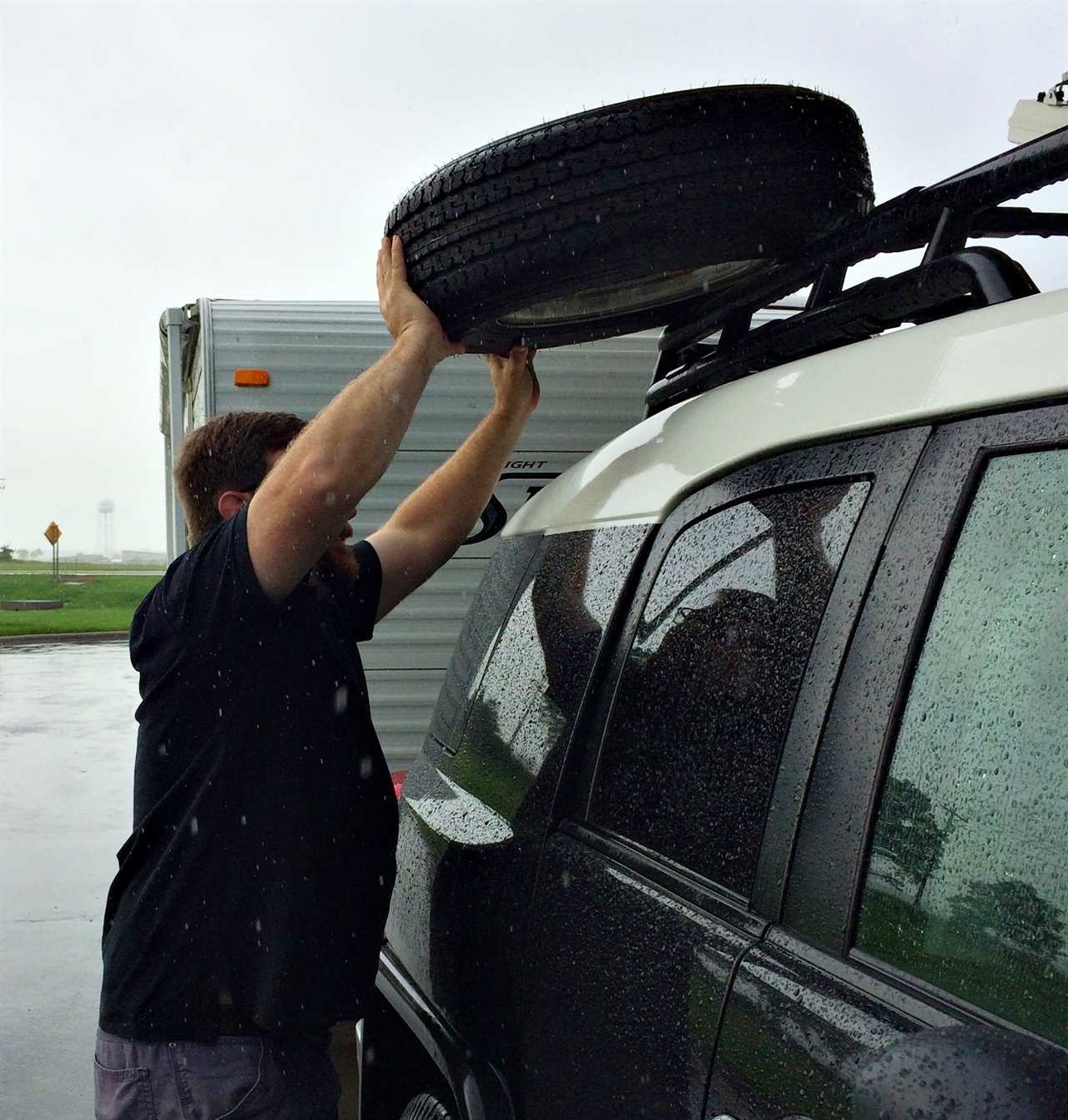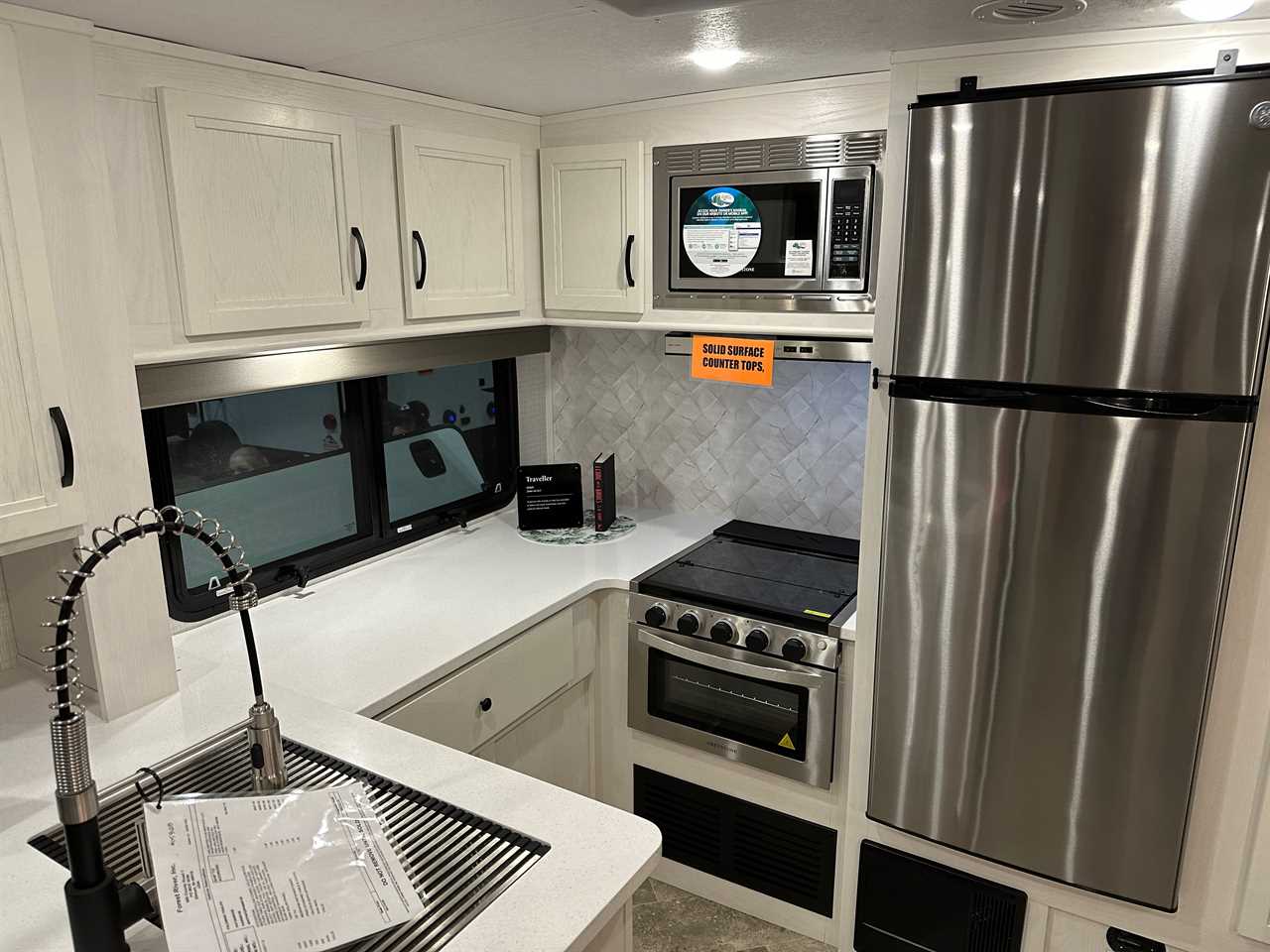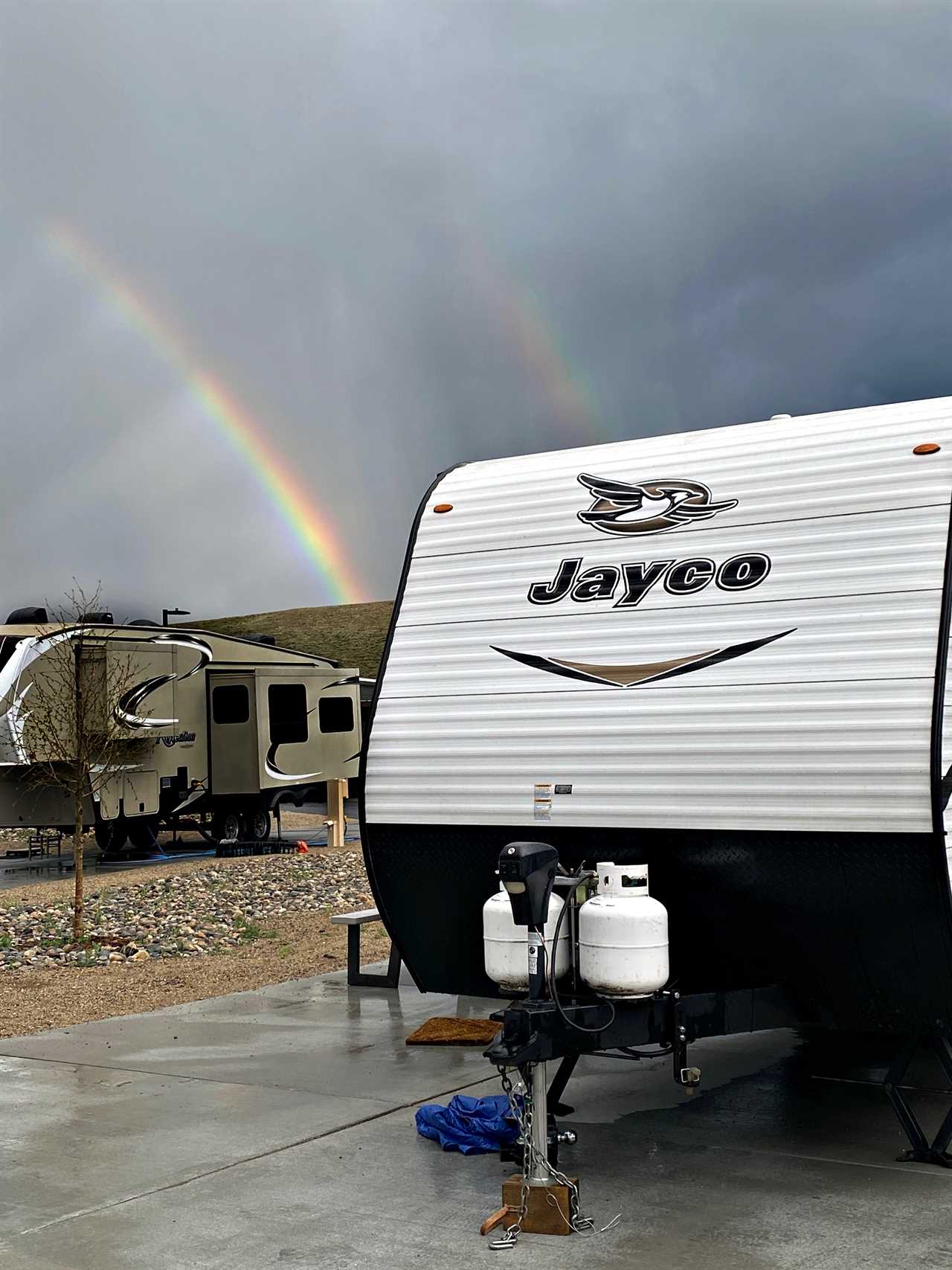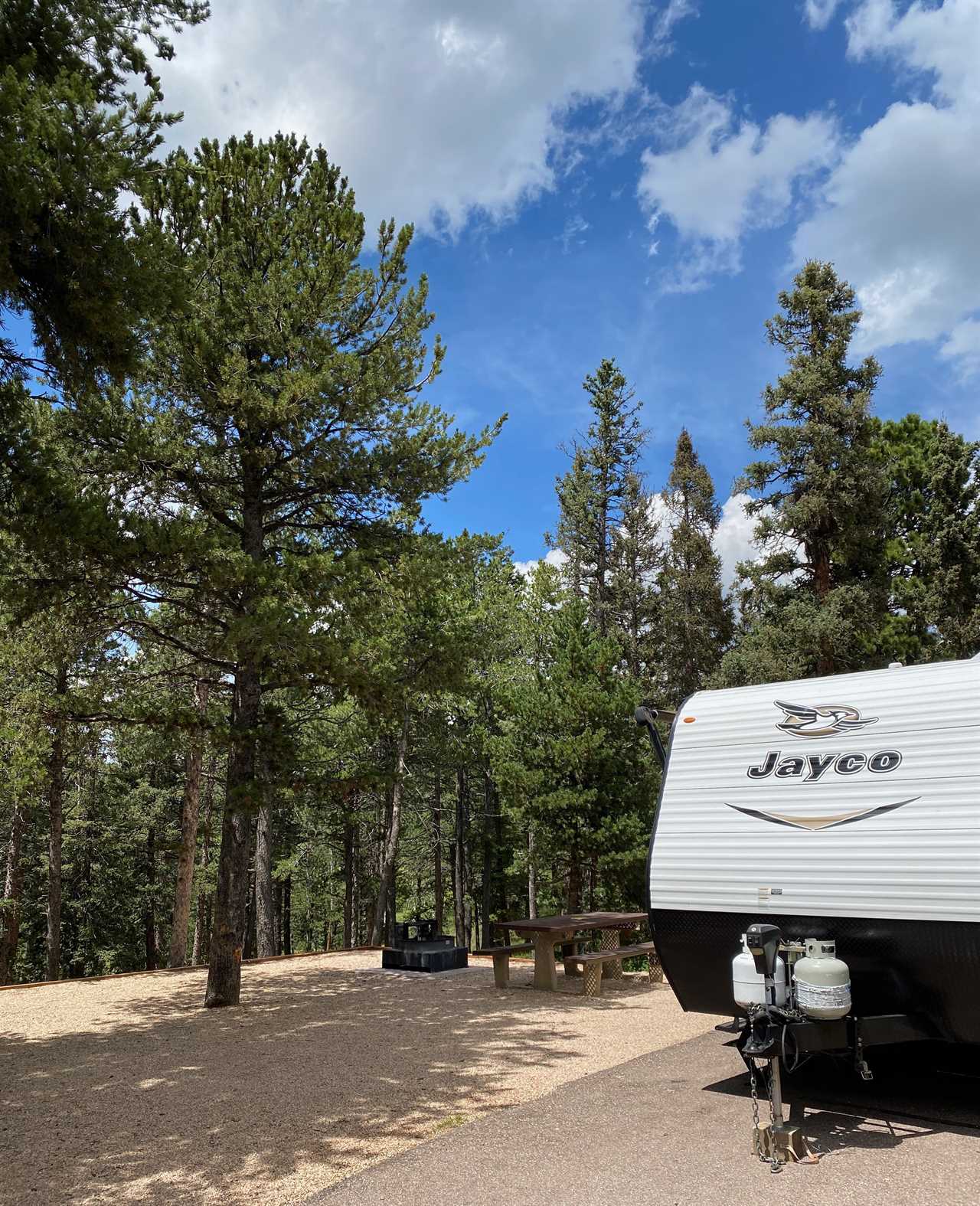Something is bound to go wrong on your first RV outing. When you are on vacation and ready to relax, it may be stressful to discover a blown tire or broken appliance; however, most RVers will tell you this is an expected part of RV travel. The good news is there are steps you can take to prepare for your first (or next) RV outing—and any problems that may arise.
Here are five problems you might encounter while RVing and tips for preventing or handling them:

Pixabay
1) Fridge Foods Aren’t Cool Enough
Problem: You get to your campsite, turn on the fridge, and head out to buy groceries. You expect to find a cool fridge when you return, but instead, it seems as hot as it was when you left.
Preparation: On our first trip, I couldn’t tell if the fridge was working at all since I couldn’t hear any sounds. I later learned that RV refrigerators operate differently from home ones, and it’s normal not to hear similar noises.
Here are some fridge-preparation tips I wish I knew:
- You must first understand that RV refrigerators take several hours to cool. Recommendations say to allow anywhere from six to 24 hours.
- Take along a cooler so you can keep your groceries on ice if you’ll be cooling your fridge at the campground.
- Some RVers cool their refrigerators before the trip and load them with cold groceries and frozen jugs of ice. Usually, that keeps your fridge and food cool enough while traveling.
- Some RVers travel with the propane on and keep the refrigerator cooling, but this is a source of much debate about safety.
- Carry a refrigerator thermometer to check temperatures and ensure safe food storage.
Research your options, and make a plan for storing food while at the campground—and on the road, depending on your needs.

Photo: Kerri Cox
2) Tire Blowout
Problem: You are driving to the campground when you suddenly see smoke pouring from the side of your RV. You realize you’ve blown a tire.
Preparation: My family experienced two blowouts in our first year of travel. Since then, we upgraded the tires and have been a lot more careful about checking ours regularly.
Chances are, you don’t spend a lot of time thinking about the tires on your car. Unfortunately, RV tires require a bit more attention. If they are a cheap brand or several years old, they very well could blow at any moment, which may be a scary—and dangerous—situation.
To avoid this, replace your tires if they are a few years old (this may occur long before they have visible signs of wear and tear from mileage). Research the various brands, as some have a reputation for better quality.
Also, always check your tire pressure before traveling. Look for the tire PSI sticker on your rig to find out the proper inflation. Finally, carry a tire pressure monitor—or buy an electronic one that will give you real-time data.

Photo: Kerri Cox
3) Air/Heat/Fridge/Stove/Water Not Working
Problem: You arrive at your campsite, and something isn’t working. It could be the air, heat, fridge, stove, or any number of things.
Preparation: It is stressful to take all the pleasures of home maintenance on vacation with you, but this is part of RVing. My husband and I are not particularly handy, so this is especially difficult for us. We have learned a few things over time:
- First, the internet is your friend. You can search for advice on how to fix practically any problem, and you might find troubleshooting videos.
- Second, there are hotlines that charge an annual fee to provide you 24-hour access to a repair tech. We paid for a couple of years of hotline access and found it useful. We got great tips and solved several problems.
- Third, you may call a mobile RV tech. Look online and find one with good reviews, or ask at the camp office for local recommendations. On one trip, we called a mobile tech who walked us through a repair over the phone for no charge!
The bottom line: Things do go wrong quite often when you are hauling around a home on wheels. Try to get comfortable troubleshooting. Pay for expert help as needed. Most importantly, don’t let these problems spoil your good time!

Setting up the campsite. Photo: Kerri Cox
4) The Setup Process Takes Too Long
Problem: You arrive at your first campsite and are ready to relax, only to find it takes you a couple of hours to get everything set up.
Preparation: RVing may be a bit like buying a fixer-upper instead of a turn-key property. You have to put a little more effort into get to the payoff. The first time you set up will likely be stressful. You might not know what needs to be done, and it will definitely take longer than you expect!.
Here are some setup preparation tips:
- If you haven’t bought an RV yet and plan to buy from a dealership, the first step of setup preparation actually starts with your RV walkthrough. Most dealerships do a final inspection with you to ensure everything is operational and may also show you how to operate your RV’s systems. Take detailed notes, or—better yet—record short videos for each step.
- If you’ve already done your walkthrough and don’t have notes/videos, or if you bought from a private party, your best bet is to search the internet. You will likely find YouTube videos. You may also find forums and Facebook groups with RVers who have rigs similar to yours. These can be very helpful!
- Look online to find setup and departure checklists. Then, over time, make your own personalized to your RV and your preferences.
- Finally, practice makes perfect. The more you do it, the easier it’ll become! You’ll soon be able to do many steps without checking your checklist (though it’s always good to do a final look, just in case you overlooked something).

Photo: Kerri Cox
5) Everyone is Miserable
Problem: You were so excited about your first trip, but then, it seems like no one is having fun. The kids are crabby, your spouse is stressed, the campsite is crappy, the WiFi doesn’t work…
Preparation: Like RVs and campsites, families can be a little unpredictable. When your family is out of its routine, everyone might get crabby. My family has had its moments! Many of them, in fact. But I have to remind myself that we have those not-so-great moments at our boring old home, too.
First, just removing the rose-colored glasses can help you have realistic expectations. RVing involves spending a lot of time in a small, unfamiliar space. It takes time to develop comfort and new routines.
Also, remember that it may take time for you to discover your family’s travel style. On our first road trips, I tried to pack too much into each day, with too early of a start. I realized this was unnecessarily stressful.

Photo: Kerri Cox
As for campsites and amenities, over time, you’ll figure out what your family wants and needs, and you’ll get better at picking the right campground for you. Pay attention to the places that feel comfortable. Do you like rustic? Do you like luxury? Do you need a cell signal to relax, or would you rather go off-grid? After a few trips, you’ll have clear answers to each of these questions. In the meantime, experiment!
The more you travel, the more you will discover your rhythm, pace, and preferences. It WILL get easier, and it WILL get better. Don’t judge the RVing lifestyle by your first few outings. Be patient with yourself, your family, and your RV as you learn the ropes.
The post 5 Big Snags You Might Hit on Your First RV Outing appeared first on Good Sam Camping Blog.
By: Kerri Cox
Title: 5 Big Snags You Might Hit on Your First RV Outing
Sourced From: blog.goodsam.com/what-could-go-wrong/
Published Date: Fri, 02 Jun 2023 17:00:00 +0000
---------------------------------------------
Did you miss our previous article...
https://outdoorsnewswire.com/camping/camping-should-i-buy-a-canvas-bell-tent-the-ultimate-bell-tent-buying-guide-updated-2023
 CampingSurvivalistHuntingFishingExploringHikingPrivacy PolicyTerms And Conditions
CampingSurvivalistHuntingFishingExploringHikingPrivacy PolicyTerms And Conditions
